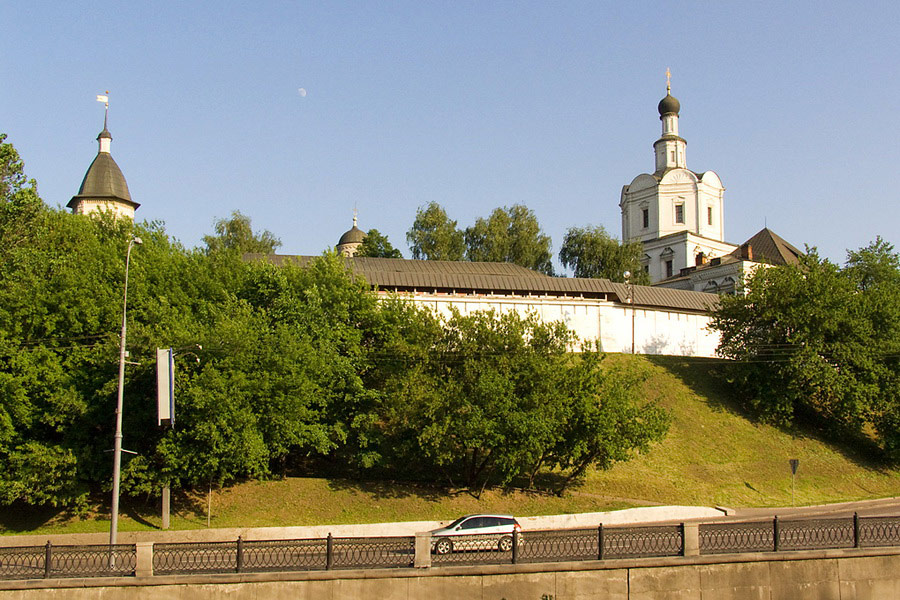
On a steep bank of the river Yauza you will see the white ancient walls, towers and temples of St. Andronik Monastery, the place which submerges the visitors in the atmosphere of ancient Russia.
This wonderful monastery is considered one of the most ancient monuments of stone architecture of Moscow. It was founded in the 14th century. The founder is the Metropolitan Alexy, a famous religious and political figure of the 14th century.
The legend of the foundation of the monastery says that on his way back from Constantinople in 1360 after being appointed the Metropolitan, Alexy got in a terrible storm. Only his prayer to the Savior and the oath to build a temple in honor of his deliverance from the sea deep saved the ship.
When in Moscow, Alexy pursuant to this vow, founded the Spassky Monastery. The pupil of Sergei Radonezhsky, Andronik, who later became the first abbot of the monastery, was invited for the construction. One by one on the hill above the river grew wooden monastic buildings: the Spassky Church, the cells, solid log walls with towers and gates. In 1360 the first church of the new monastery was consecrated, in which the Metropolitan Alexy put the image of the Savior Almighty, which accompanied him on the way from Constantinople.
In the beginning of the 15th century the St. Andronik Monastery received the white-stone cathedral the Image of the Savior, one of the oldest stone buildings in Moscow survived until now. The great Russian icon painter Andrei Rublev took part in its construction. He also adorned it with his murals, but they have survived only tiny fragments. The Rev. Andrei Rublev, the former monk of the St. Andronik Monastery, lived and died there in 1430 and was buried there as well. The Spassky Church is rather original. This is the monument of Russian national Renaissance. The Cathedral strives upward and this movement carved in stone symbolizes the flight of Russian spiritual life at the turn of the 14th century. The monastery is associated with the names of St. Sergius of Radonezh, Dmitry Donskoy, Andrei Rublev, Epiphanius the Wise, Theophanes the Greek.
In addition to the Spassky Church other stone structures appeared on the monastery territory. For example, in the end of the 15th century, the brick refectory was built. It is one of the few surviving brick buildings in Moscow of the 16th century. In 1691-1694 the three-level church was added to it. It was built by the Tsarina Evdokia Lopukhina, the first wife of Peter I. The reason for its erection was the birth of the heir to the throne, Prince Alexei. The gate Church of the Nativity of the Virgin, the walls and towers of the monastery were built in the second half of the 17th century. At the same time were built the rectory quarters. At the end of the 18th century the 73-meter bell tower with the church of Simeon the Righteous defining the modern silhouette of the monastery were added.
In the 1920s the St. Andronik Monastery became a concentration camp for political criminals. From 1960 the Monastery has been housing the Museum of Early Russian Art named after Andrei Rublev.
In 1989 the Cathedral was given to the Moscow Patriarchate.

